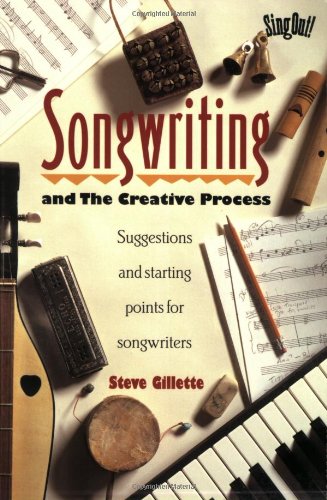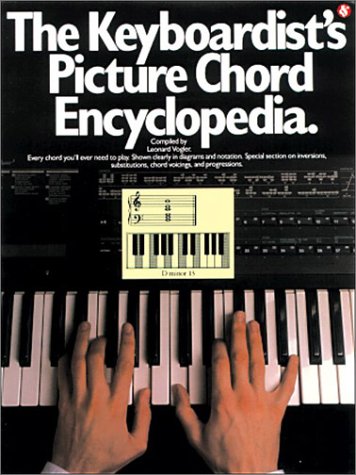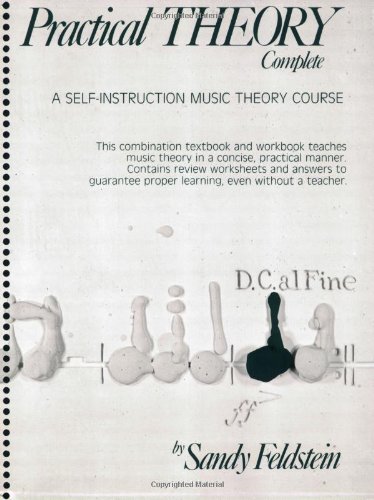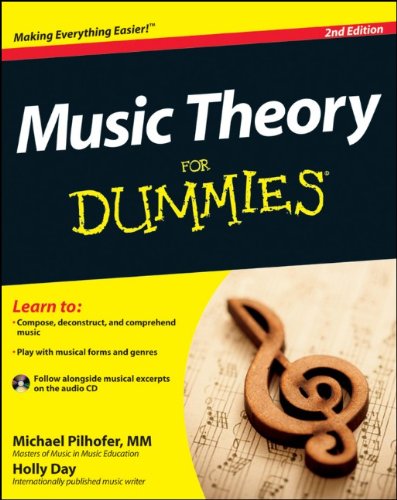
Music Theory For Dummies
Michael Pilhofer
Paperback 2nd edition - 336 pages & CD (November 2011)
Whether you're a student of music or a music lover,
Music Theory For Dummies presents you with essential
information on how to read, write, and understand music, as
well as helpful hints on composing, arranging, and creating
original melodies, harmonies, and chords.
Music Theory For Dummies gives you a friendly, unintimidating
overview of the material covered in a typical college-level course
and makes music theory easy to understand. It includes updated
information on current teaching techniques; the newest music examples
and genres; information on mastering major and minor scales, using
intervals, and recognizing pitches and clefs; the lowdown on rhythms,
tempo, dynamics, and navigation; how to transcribe the music you hear
and transposing it to other keys; harmonizing and accompanying melodies;
composing and arranging for voices and instruments; performing your own
music; and much more.
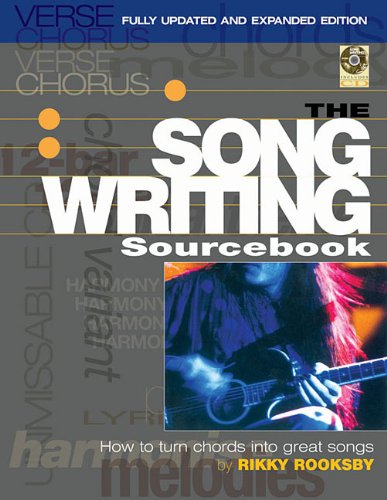
The Songwriting Sourcebook: How to Turn Chords into Great Songs
Rikky Rooksby
Paperback Fully Updated and Expanded Edition - 256 pages & CD (April 2011)
Complementing the best-selling How To Write Songs On Guitar, this easy-to-use book
will help you write better songs by explaining the art of writing effective chord sequences.
It shows: How three and four chords can lay the foundation for a simple song, and how to
move on to progressions using five and six chords; How to give your chord sequences additional
colour by adding chords that are not strictly in key, including blues chords; How to write
chord sequences for songs in minor keys as well as major keys, and how to take progressions
into new territories by changing key; and, How to fine-tune the colour of your chords by
understanding the emotional potential of sevenths, sixths and ninths. All examples come with
easy-to-read guitar chord boxes and the accompanying 20-track audio CD features original
recordings that illustrate some of the points made in the book.
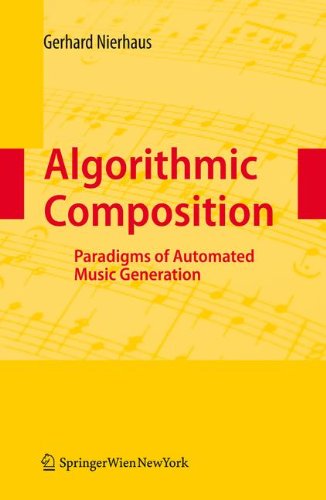
Algorithmic Composition: Paradigms of Automated Music Generation
Gerhard Nierhaus
Paperback - 297 pages (November 2010)
Algorithmic composition — composing by means of formalizable methods — has a century
old tradition not only in occidental music history. This is the first book to provide a detailed
overview of prominent procedures of algorithmic composition in a pragmatic way rather than by
treating formalizable aspects in single works. In addition to an historic overview, each chapter
presents a specific class of algorithm in a compositional context by providing a general introduction
to its development and theoretical basis and describes different musical applications. Each chapter
outlines the strengths, weaknesses and possible aesthetical implications resulting from the application
of the treated approaches. Topics covered are: markov models, generative grammars, transition networks,
chaos and self-similarity, genetic algorithms, cellular automata, neural networks and artificial
intelligence are covered. The comprehensive bibliography makes this work ideal for the musician and
the researcher alike.
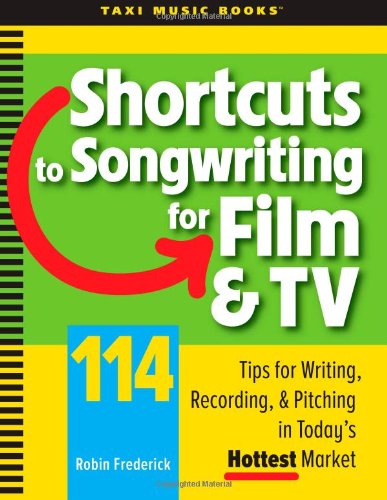
Shortcuts to Songwriting for Film & TV: 114 Tips for Writing, Recording, & Pitching in Today's Hottest Market
Robin Frederick
Paperback - 342 pages (October 2010)
Tens of thousands of songs are needed each year for TV, movies, and commercials. The songwriting
techniques and marketing tips in this book will show you how to craft your music and lyrics to
give the Film and TV industry what it needs, make broadcast quality recordings, and pitch your songs
to today's fastest growing and largest market for music. You'll learn...
• 16 secrets to writing powerful lyrics that will work in hundreds of scenes
• 10 techniques for creating energy, mood, and atmosphere in your songs
• 21 strategies for making broadcast quality recordings on a budget
• 17 Shortcuts that help you lay the business groundwork and start pitching your songs
... plus 50 more Shortcuts, including an in-depth look at the Top Ten ways songs are used in Film and TV,
tips on writing for Film and TV musicals, and exclusive interviews with top music supervisors and buyers!
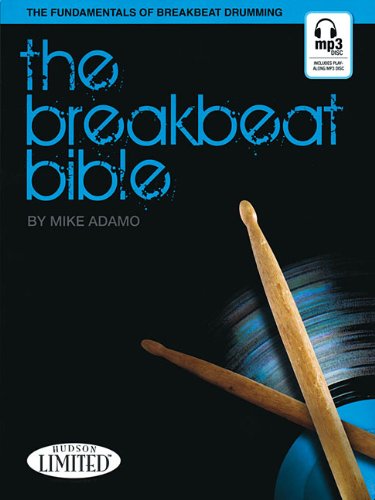
The Breakbeat Bible
The Breakbeat Bible
Paperback - 192 pages & CD (September 2010)
Provides the most in-depth study of breakbeat drumming in print. The style is divided into thirteen
essential elements, with each element discussed in its own chapter. Hundreds of exercises and beats
give the reader ample opportunity to practice the elements, which, when assembled, will give the
drummer the ability to integrate a complete language of incredibly funky concepts into his or her
playing. Over 90 transcriptions of beats and breaks provide the reader with a window into hip-hop/breakbeat
drumming. Included are some of the most sampled beats in music history including information about the
original song and later songs that used the sample. Also included is a historical overview of hip-hop and
breakbeat drumming, as well as biographies of many of the architects that helped design the culture. The
Click Track Loops chapter provides an incredibly challenging system for practicing the breakbeat/hip-hop
elements and other grooves against various patterns programmed into a drum machine. These will help the
reader attain new levels of tightness, precision, and groove in their drumming. The Breakbeat Bible
MP3 Disc features examples of select exercises, beats, and eight-bar phrases from the book. It also contains
five play-along instrumental tracks (with and without drums). There is also a bonus sample library featuring
30 individual drum/cymbal sounds. Bonus Sections include Beats With Drops, Fills, and Dubstep.
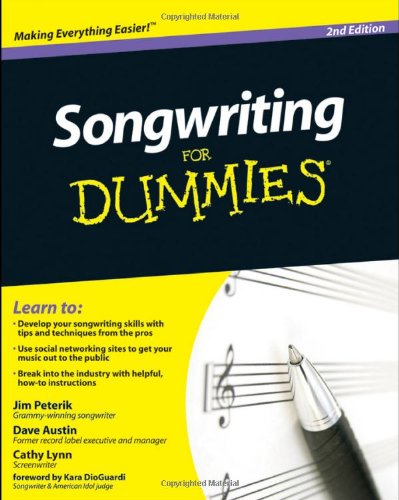
Songwriting For Dummies
Dave Austin, Jim Peterik, Cathy Lynn
Paperback 2nd edition - 384 pages (August 2010)
This friendly, hands-on guide tackles the new face of the recording industry, guiding you through the
shift from traditional sales to downloads and mobile music, as well as how you can harness social media
networks to get your music "out there". You get basic songwriting concepts, insider tips and advice,
and inspiration for writing — and selling — meaningful, timeless songs.
• Songwriting 101 — get a grip on everything you need to know to write a song, from learning
to listen to your "inner voice" to creating a "mood" and everything in between
• Jaunt around the genres — discover the variety of musical genres and find your fit, whether
it's rock, pop, R&B, gospel, country, or more
• Let the lyrics out — master the art of writing lyrics, from finding your own voice to penning
the actual words to using hooks, verses, choruses, and bridges
• Make beautiful music — find your rhythm, make melodies, and use chords to put the finishing
touches on your song
• Work the Web — harness online marketing and social networks like Facebook, Twitter, and others
to get your music heard by a whole new audience.
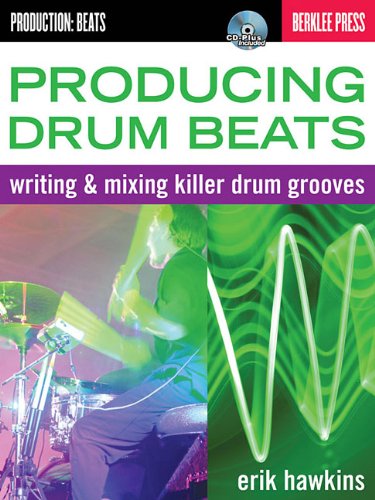
Producing Drum Beats: Writing and Mixing Killer Drum Grooves
Eric Hawkins
Paperback - 86 pages (July 2010)
Whether you're into hip-hop, urban, rock, alternative, dance, electronic, jazz, blues, or country, drums
play a prominent roll in the production and arrangement of a song. This book will help to explain everything
you'll need to know to produce your own killer beats, from describing individual drums and how they are most
commonly played, to MIDI drum sequencing tricks used by the pros, and the proper use of compression, EQ, and
group effects when mixing drums. Over time and with steady practice, you'll be able to make these drum production
techniques your own, taking your song production skills to the next level while at the same time becoming a
master beat-maker.
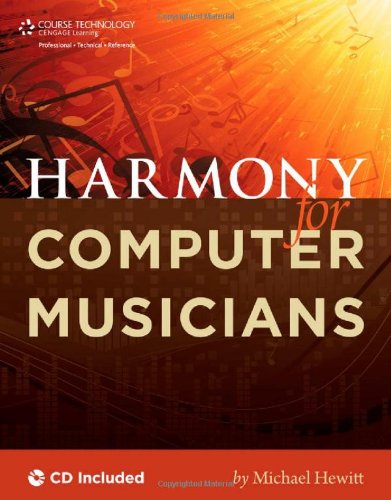
Harmony for Computer Musicians
Michael Hewitt
Paperback - 256 pages & CD (June 2010)
Home music producers now have access to a wide variety of software synthesizers, samplers, and
FX devices on their computers — devices that had previously been available only in expensive
hardware forms. Although computer musicians often show a high degree of skill and expertise with
the technology they use to produce their music, many mistakenly assume that this is all they need
to produce quality tracks. Yet there is often a vital ingredient missing: a useful knowledge of
the way the language of music actually works — an understanding of the ingredients of music and
how they are put together; what scales, chords, modes, and keys are; and the principles of
arrangement, melody, and harmony. In other words, computer musicians may have learned how to use
their instruments, but this does not necessarily mean that they know how to create professional-sounding
music using those instruments. This book was written to help computer musicians grow in their knowledge
of musical harmony, knowledge that is essential for the skilled creation of complex musical works.
Topics include intervals, tonality and the key system, part writing, triads, tonic and dominant harmony,
modulation, and modal interchange and harmony. Techniques are taught using the tools computer musicians
are most familiar with. Rather than using a conventional score format, most of the materials are presented
in the familiar piano roll format of computer music sequencing programs. For practice, the companion CD
contains numerous short exercises that will considerably improve the musician's skill in the art of musical
harmony.
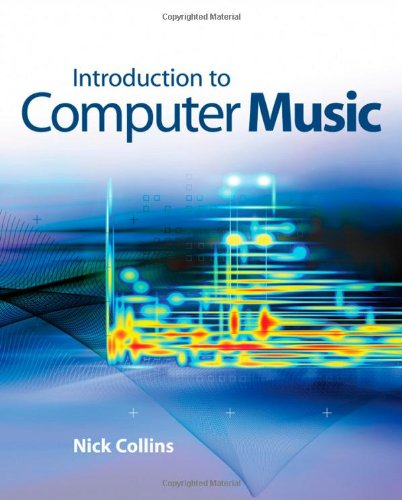
Introduction to Computer Music
Nick Collins
Paperback - 396 pages (February 2010)
A must-have introduction that bridges the gap between music and computing.
The rise in number of composer-programmers has given cause for an essential resource that addresses the
gap between music and computing and looks at the many different software packages that deal with music
technology. This up-to-date book fulfills that demand and deals with both the practical use of technology
in music as well as the principles behind the discipline. Aimed at musicians exploring computers and
technologists engaged with music, this unique guide merges the two worlds so that both musicians and
computer scientists can benefit.
• Defines computer music and offers a solid introduction to representing music on a computer
• Examines computer music software, the musical instrument digital interface, virtual studios, file formats, and more
• Shares recording tips and tricks as well as exercises at the end of each section to enhance your learning experience
• Reviews sound analysis, processing, synthesis, networks, composition, and modeling
Assuming little to no prior experience in computer programming, this engaging book is an ideal starting
point for discovering the beauty that can be created when technology and music unite.
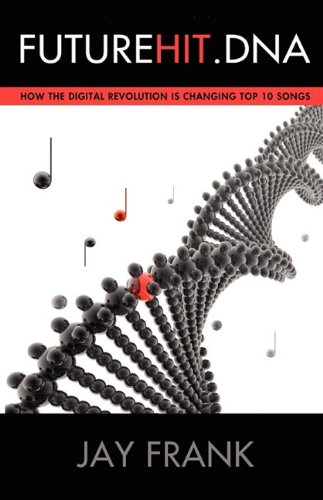
Futurehit.DNA
Jay L. Frank
Paperback - 252 pages (September 2009)
Future Hit.DNA provides a road map to this digital landscape, outlining 15 points that must change in
a song if the artists, songwriters and producers of tomorrow want a chart topping hit. For the first time,
Future Hit.DNA actually dissects the elements to a hit song based on the technology that delivers the
music. It shows how technology has always led the way hit songs are written from campfires to car stereos. The
book provides the blueprint to the subtle changes that need to be made that result in little difference to
music fans, but big differences in that song's placement on the charts. The new digital world also opens up
many more opportunities for artists and songwriters to earn money on their music than ever before. While
examining the methods for tomorrow's hits, Future Hit.DNA also shows how these changes can result in larger
royalty checks. Songs can now earn more money than ever, as long as the creator knows the tricks. For the first
time, Future Hit.DNA delivers inside tricks from both the music listener and music industry perspective.
When utilized, these tips will result in significant advantages in those songs' abilities to become hits. This
unprecedented insight will give its readers a leg up over the competition, thereby making the book an essential
read for anyone involved in the creation of music.
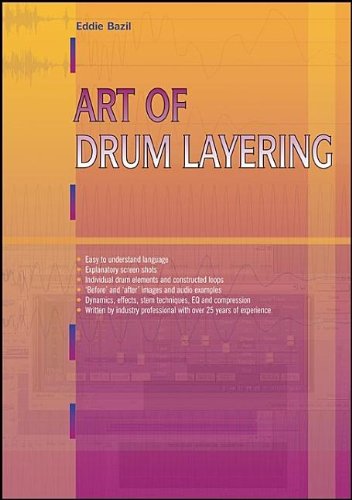
Art of Drum Layering
Eddie Bazil
Paperback - 121 pages (September 2009)
The Art of Drum Layering presents a detailed and thorough exploration of the processes and techniques
involved in layering drum sounds. With audio and image files accompanying all the examples, this book demystifies
the technical and creative processes involved in mastering the confusing subject of drum layering.
Detailed explanations of all processes used understanding frequencies and sound, the constituents and manipulation
of the sound's dynamics, processes such as EQ and compression, a thorough exploration of effects and how to use
them to shape drum sounds, the enigma that is filtering the Art of Drum Layering leaves no stone unturned.
The Art of Drum Layering also addresses the thinking and creative processes required to develop simple drum
beats into fully focused 'songs', employing an explanation of the elements used and how they are best layered for
optimum effect.
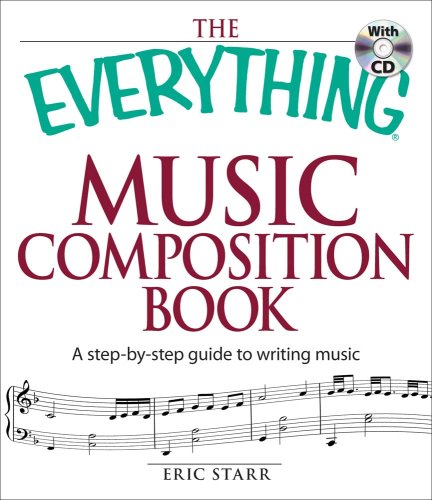
The Everything Music Composition Book with CD: A step-by-step guide to writing music
Eric Starr
Paperback - 304 pages &: CD (August 2009)
This book is an all-in-one guide for people who want to compose their own musical arrangements.
You will learn to tap into your creativity while integrating melody, harmony, rhythm, and other
musical devices. In no time, you?ll be writing music in a wide range of genres, from rock to jazz
and classical to Latin! This book features:
• Instruction for score writing for various ensembles
• Critical information about musical history
• Dozens of recorded examples
• Tips for getting music performed and published.
This book and CD package shows you how to master complex musical ideas and apply them to your own
creative works. You will be inspired to write and showcase your pieces with this fun and easy resource!
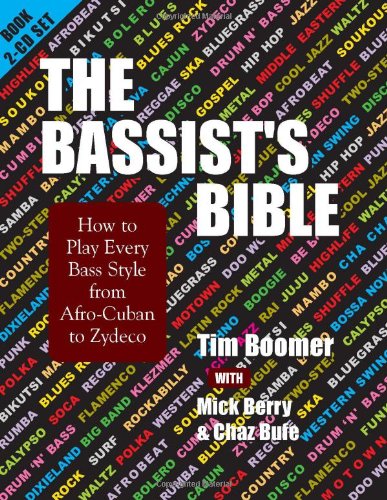
The Bassist's Bible: How to Play Every Bass Style from Afro-Cuban to Zydeco
Tim Boomer, Mick Berry
Paperback - 200 pages & 2 CDs (July 2009)
The incredible diversity of the bass guitar is revealed in this all-inclusive style guide. Each chapter
covers particular styles or families of styles, gradually introducing players to techniques that will
allow them to get the most out of their instrument and easily increase their bass repertoire. More than
400 bass grooves are presented, spanning an excess of 100 styles that musicians can follow along with on
each of the two accompanying CDs. In addition to techniques for mastering the various styles, historical
information about how they developed is included, giving players a one-of-a-kind opportunity to be true
masters of the bass guitar.
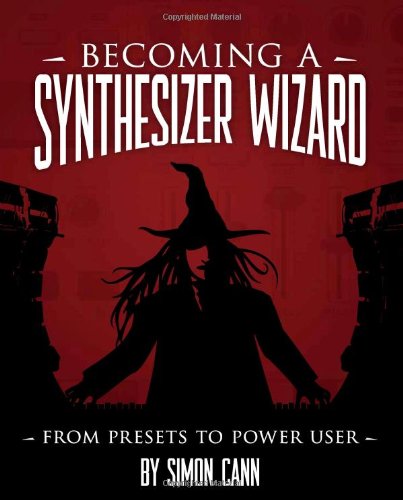
Becoming a Synthesizer Wizard: From Presets to Power User
Simon Cann
Paperback - 368 pages (May 2009)
With the rise digital recording software and the advent of the "one man computer music studio" there has been
an astronomical rise in the number of people with software instruments, but many of these musicians have no
idea how to use the modular synthesizers included with their music software programs.
Becoming a Synthesizer Wizard: From Presets to Power User is the first book that explains what a modular
synthesizer is, how it works, and how to use software synthesizers to make music. The book takes a highly practical
approach to the subject providing a readable guide which opens up the subject to a broad spectrum of readers. It
begins by explaining what the basic building blocks of modular synthesis are, and how they interact. Then it
continues to specific exercises utilizing software synthesizers that will be readily available to the reader,
regardless of platform or digital audio workstation of choice.
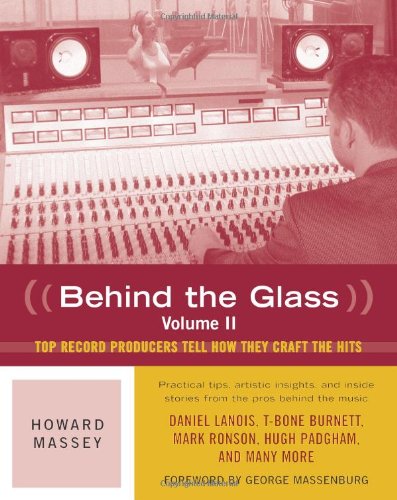
Behind the Glass, Volume II: Top Producers Tell How They Craft the Hits
Howard Massey
Paperback - 330 pages (April 2009)
Presents another prime collection of firsthand interviews with the world's top record producers and engineers,
sharing their creative secrets and hit-making techniques — from the practical to the artistic. In these
pages you'll find Daniel Lanois (U2, Bob Dylan) discussing the future of digital recording; T-Bone Burnett
(Robert Plant and Alison Krauss) sharing his unique view of creating complex low end; and Hugh Padgham
(Police, Genesis) analyzing the state of the business today. For real-world advice on everything from home
recording to mixing to coaching a nervous singer, check out author Howard Massey's conversations with Mark Ronson
(Amy Winehouse), Tony Brown (Reba McEntire), Gus Dudgeon (Elton John), John Simon (The Band), Russ Titelman
(Steve Winwood), Bruce Swedien (Michael Jackson), Rodney Jerkins (Mary J. Blige), Simon Climie (Eric Clapton),
Matt Serletic (Matchbox Twenty), and more.
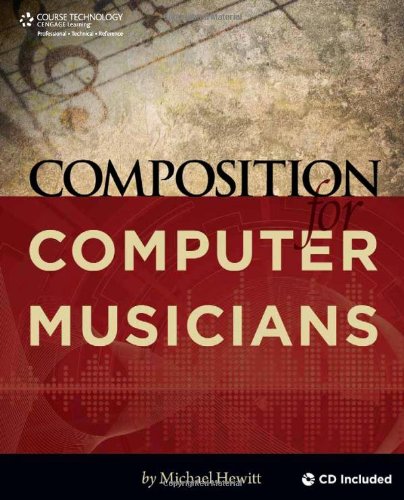
Composition for Computer Musicians
Michael Hewitt
Paperback - 220 pages (March 2009)
You might be extremely knowledgeable about the software that you use, have a good understanding of your own
genre, and even have a good basic understanding of music theory. However, this does not necessarily mean that
you can write effective music tracks. You need another kind of knowledge as well — the knowledge of composition.
This friendly guide explains the basics of composing songs and music on the computer using any music using any
music creation and recording program, whether you choose Reason, Live, Cubase, Logic, Pro Tools, Digital
Performer, Finale, Sibelius, FL Studio, SONAR, or anything else. It's not as hard as it sounds, and this book
eases the learning curve so you'll be making music in no time. You'll quickly learn how to program rhythm and
drums, create basslines and melodic leads, and use FX and samples. You'll also learn about mixing and mastering
your track and distributing it to a mass audience. Composition for Computer Musicians explains it all while
showing you the basics of music theory throughout so you'll be sure you're not just making noise on the computer
— you're using your computer to make professional-sounding music.
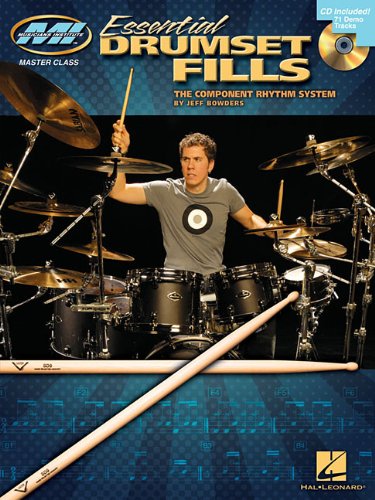
Essential Drumset Fills
Jeff Bowders
Paperback - 120 pages & CD (February 2009)
This drumming workbook helps to perfect fill technique for a variety of rock styles. Basic rhythms are shown,
then modified with orchestrations. Practice tips and a variety of quotes provide additional inspiration. The
accompanying CD includes 71 demo and play-along tracks. Covers: practice suggestions, motion concepts, compound
rhythm concepts, hand-foot concepts, drum to cymbal concepts, roll concepts, play-along charts, percussion notation,
and more.
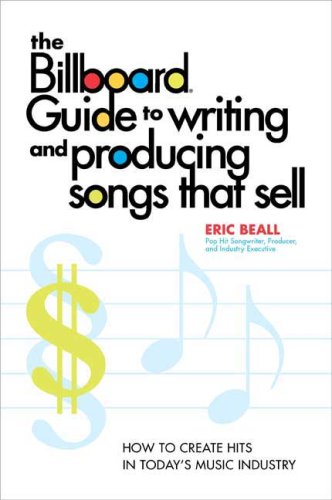
The Billboard Guide to Writing and Producing Songs that Sell: How to Create Hits in Today's Music Industry
Eric Beall
Paperback - 288 pages (January 2009)
Unveils the secrets to climbing the charts and reaching success in today's ultracompetitive music industry.
Eric Beall supplies his firsthand knowledge of today's record business, as well as interviews with successful
writers, producers, and executives from the worlds of pop, hip-hop, country, adult contemporary, and R&B.
The result: a proven approach to constructing songs that open doors, create careers, and communicate to listeners
around the world. Key areas explored include:
&ball; How does a song become a hit?
&ball; What makes a song a single?
&ball; Is there a formula for creating a hit?
Fun and practical exercises provide opportunities to hone skills and expose specific talents, helping songwriters
combine their unique voices to the demands of the commercial marketplace. Filled with fresh ideas that will spark
beginners and veterans alike, this book will lead the way toward the industry's ultimate challenge: the creation
of that chart-topping hit song.
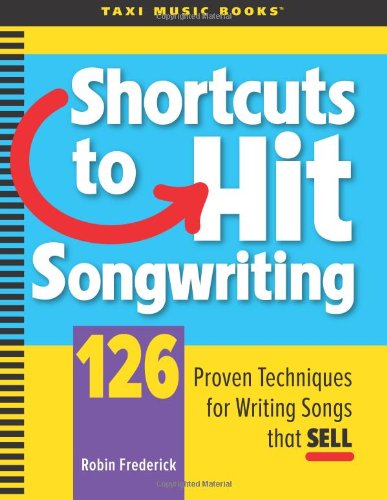
Shortcuts to Hit Songwriting: 126 Proven Techniques for Writing Songs That Sell
Robin A. Frederick
Paperback - 288 pages (October 2008)
Here are 126 Shortcuts that will take your songs from good to great! Discover the melody and lyric
writing techniques of today's top songwriters and learn how you can use the very same secrets to
give your songs the power and edge that will make listeners want to hear them over and over again.
You'll learn...
• 38 proven strategies for creating powerful, unforgettable lyrics
• 30 simple ways to make your melody fresh, exciting, and memorable
• How to use hit songs as "ghost songs" to get quick results.
Plus, there are 58 more Shortcuts to help you lay the groundwork, pick the perfect structure, and choose
the chords that will give your songs even more hit potential. And there are more than 100 "Do It Now"
exercises to get you started right away!
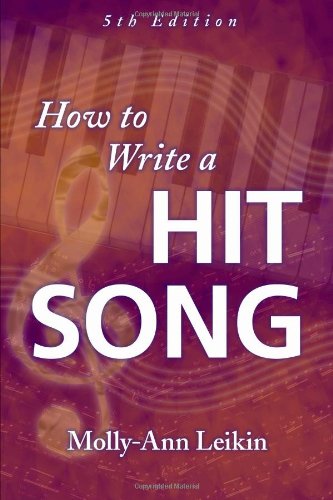
How to Write a Hit Song
Molly-Ann Leikin
Paperback - 114 pages (October 2008)
Covering all the essentials of craft and marketing for launching and sustaining a long, successful
writing career, this cutting-edge revision contains an exclusive interview with Oscar-winning songwriter
Melissa Etheridge — I Need to Wake Up — and shows you, step by step, how to write a hit song.
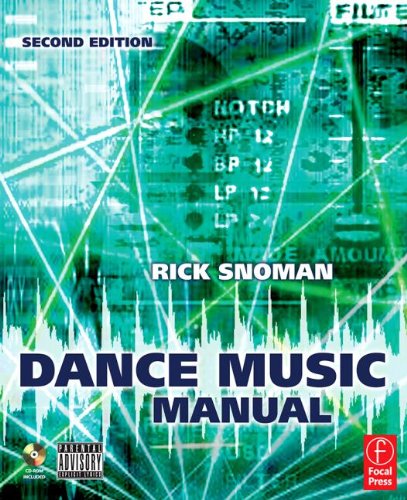
Dance Music Manual, Second Edition: Tools, Toys, and Techniques
Rick Snoman
Paperback 2nd edition - 528 pages (October 2008)
Whatever your level of experience, the Dance Music Manual is packed with sound advice,
techniques, and practical examples to help you achieve professional results. Written by a
professional producer and remixer, this book offers a comprehensive approach to music production,
including knowledge of the tools, equipment, and different dance genres.
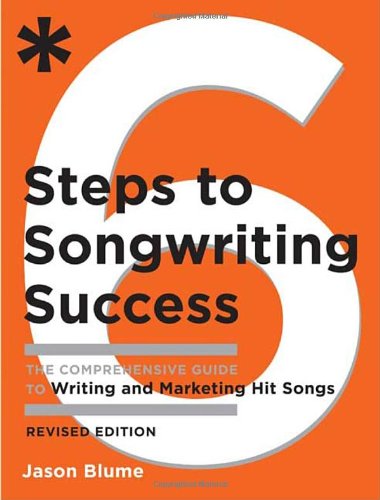
Six Steps to Songwriting Success: The Comprehensive Guide to Writing and Marketing Hit Songs
Jason Blume
Paperback 2nd edition - 304 pages (September 2008)
What's the secret to writing a hit song? It's as simple as 1-2-3-4-5-6! Innovative, practical, and
inspiring, Six Steps to Songwriting Success presents a surefire step-by-step approach to mastering
the elements consistently found in hit songs. Author Jason Blume, a songwriter with the rare distinction
of having had songs on the Country, Pop, and R&B charts simultaneously, has packed this book with such key
aids as the three-step lyric writing technique used by the pros; lyric, melody, and demo checklists; and
tools for self-evaluation–plus many other exercises that work. Blume's warm, humorous style features
motivational anecdotes and entertaining stories of how hit songs came to be written and recorded.
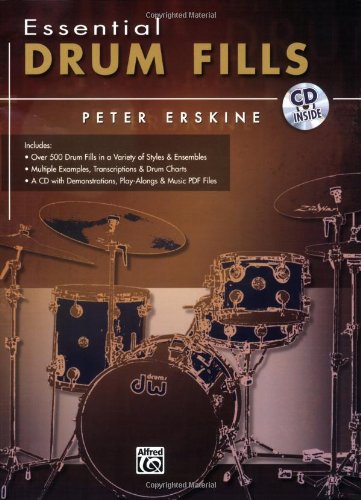
Essential Drum Fills
Peter Erskine
Paperback - 79 pages & CD (August 2008)
Essential Drum Fills is a collection of fills that Peter Erskine has enjoyed hearing and/or playing
over the years. The book includes over 500 drum fills in a variety of styles and ensembles, as well as multiple
examples, transcriptions and drum charts. A CD with demonstrations, play-alongs and music pdf files is also included.
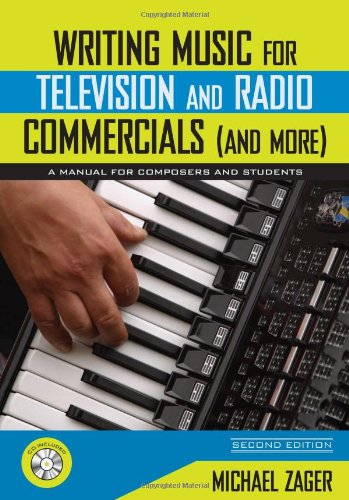
Writing Music for Television and Radio Commercials (and more): A Manual for Composers and Students
Michael Zager
Paperback 2nd edition - 272 pages (July 2008)
Succinctly describes the process of composing and arranging commercials for these two very different media.
Expanded from the first edition, this new volume provides a comprehensive overview of the commercial music
business, while addressing the tools of composition and arranging and giving helpful instruction for jingle
writing and composing for commercials. Michael Zager offers concise methods for analyzing commercials from a
musical point of view, properly arranging instruments to get the desired sound, and correctly scoring for
each instrument. He often uses interviews with professionals in the field to corroborate his information,
and the chapters conclude with assignments for practice.
This second edition has been rewritten and reformatted to increase readability and use in the classroom, and
it includes new chapters on theatrical trailers, video games, Internet commercials, Web site music, and
made-for-the-Internet video. An included audio CD contains examples referenced in the book. This text is a
necessary tool for the music student interested in the commercial and advertising business. It is also useful
for composers studying film scoring, as well as advertising writers, art directors, and music producers.
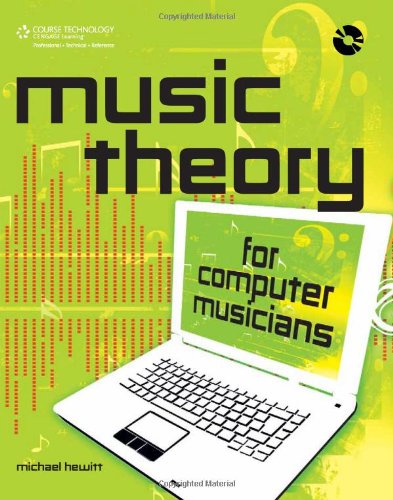
Music Theory for Computer Musicians
Michael Hewitt
Paperback - 320 pages & CD (April 2008)
Many DJs, gigging musicians, and electronic music producers
understand how to play their instruments or make music on the
computer, but they lack the basic knowledge of music theory needed
to take their music-making to the next level and compose truly
professional tracks. Beneath all the enormously different styles of
modern electronic music lie certain fundamentals of the musical
language that are exactly the same no matter what kind of music
you write. It is very important to acquire an understanding of these
fundamentals if you are to develop as a musician and music producer.
Put simply, you need to know what you are doing with regard to the
music that you are writing. Music Theory for Computer Musicians explains
these music theory fundamentals in the most simple and accessible way
possible. Concepts are taught using the MIDI keyboard environment and
today's computer composing and recording software. By reading this book
and following the exercises contained within it, you, the aspiring music
producer/computer musician, will find yourself making great progress toward
understanding and using these fundamentals of the music language. The result
will be a great improvement in your ability to write and produce your own
original music!
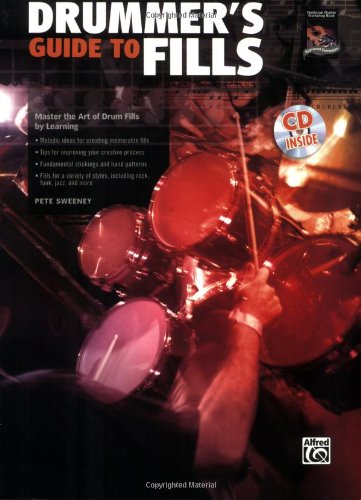
Drummer's Guide to Fills
Pete Sweeney
Paperback - 79 pages & CD (April 2008)
Drummer s Guide to Fills is designed to expand drumming vocabulary by teaching
fills all drummers can use to add excitement to different sections of a song, or even
use as the building blocks of a solo. Learning how to play fills is not enough; drummers
need to know when and where to play them. This book offers a step-by-step approach to
playing fills of varying lengths, as well as different approaches to resolving fills and
returning to the groove. Learn fills in many styles, from rock to funk to jazz, plus a
melodic approach to fills that allows further embellishment on basics. For those looking
to move beyond the simple basics of groove playing, this book will get you there. A CD
demonstrating the musical examples is included.
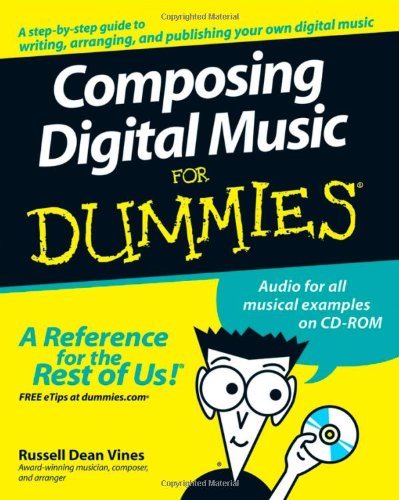
Composing Digital Music For Dummies
Russell Dean Vines
Paperback - 357 pages & CD-ROM (March 2008)
Yes, you can turn those great melodies and smokin' grooves in your head into
stunning digital music! And you don't have to be a musical genius or a computer
geek to do it! Composing Digital Music For Dummies shows you everything you need
to know to compose great tunes using the hottest digital tools.
This friendly, plain-English guide explains all of the digital music basics, including
how to work with the latest hardware and software, use templates from the companion
CD-ROM to make a quick start, build your first tune, and save it in different formats.
You'll also find out how to add instruments to your score, set tempos and keys, create
chord symbols and show fretboards, add lyrics to your tune, and much more.
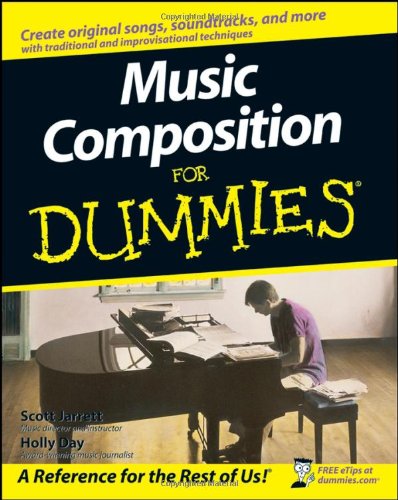
Music Composition For Dummies
Scott Jarrett
Paperback - 360 pages (February 2008)
Want to turn that haunting tune in your head into an awesome sound in your ear?
You can! Music Composition For Dummies demystifies the process of composing
music and writing songs. It guides you through every step of writing your own music, from
choosing the right rhythm and tempo to creating melodies and chord progressions and working
with instruments and voices.
In this fun and practical guide, you'll learn how to match keys and chords to the mood you want
to convey, work a form without limiting your creativity, and hammer out a musical idea, even
when your mind is drawing a blank. You'll find out how to create popular songs, classically
structured pieces, and even film, TV, and video game soundtracks. And, you'll learn what you need
to know about music composition software, including Finale, Sebelius, Pro Tools, and more.
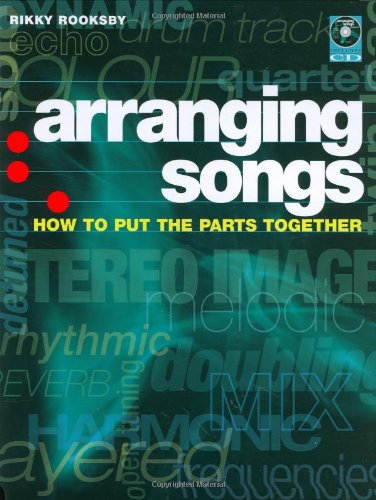
Arranging Songs
Rikky Rooksby
Paperback - 190 pages & CD (January 2008)
Explores arranging essentials such as grouping instruments effectively, using multi-track recording,
artfully layering parts, achieving a good mix, and creating unusual arrangements using common techniques.
The accompanying CD illustrates all of the techniques presented in the book. Guitar chord boxes are
included for the CD tracks where appropriate.
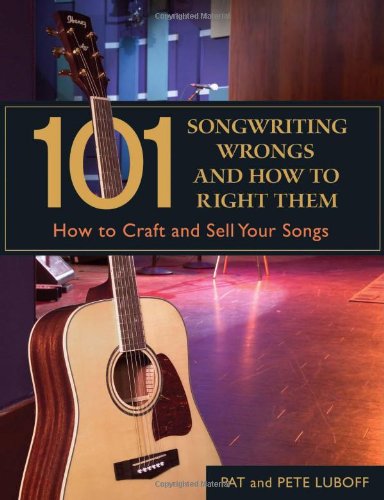
101 Songwriting Wrongs and How to Right Them: How to Craft and Sell Your Songs
Pete Luboff, Pat Luboff
Paperback 2nd edition - 304 pages (October 2007)
This book takes you on the songwriter's journey from the first inspiration for a song to the
collection of worldwide royalties. Experienced songwriters Pat and Pete Luboff point out the
stumbling blocks you'll encounter along the way, and how to turn them into stepping stones to
songwriting success. In 101 fun and easy-to-read chapters, you'll find tips on:
&build; building solid, marketable song structures
&build; creating the perfect lyrics accompanied by moving melodies
&build; forming productive and profitable collaboration ventures
&build; producing effective demos that you can pitch
&build; tracking your royalty collection
You'll also discover how new technology is changing songwriting and how to use that to your
advantage. Plus, you'll get insider tips on traveling to and living in the songwriting centers
of the country — Los Angeles, New York City, and Nashville. Everything you need to live
and succeed at the songwriter's life can be found in this great resource.
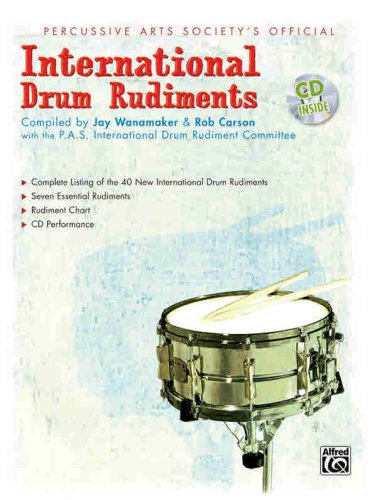
International Drum Rudiments
Rob Carson, Jay Wanamaker
Paperback - 16 & CD pages (August 2007)
This is the new official rudiment list as adopted by the Percussive Arts Society. A recording
performed by World Champion Snare Drummer, Rob Carson, is included.
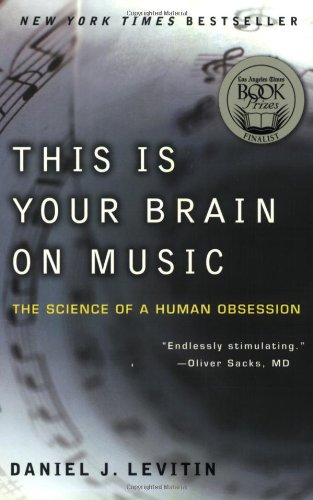
This Is Your Brain on Music: The Science of a Human Obsession
Daniel J. Levitin
Paperback - 322 pages (August 2007)
In this groundbreaking union of art and science, rocker-turned-neuroscientist Daniel J. Levitin
explores the connection between music?its performance, its composition, how we listen to it, why
we enjoy it?and the human brain. Drawing on the latest research and on musical examples ranging
from Mozart to Duke Ellington to Van Halen, Levitin reveals:
• How composers produce some of the most pleasurable effects of listening to music by exploiting
the way our brains make sense of the world
• Why we are so emotionally attached to the music we listened to as teenagers, whether it was
Fleetwood Mac, U2, or Dr. Dre
• That practice, rather than talent, is the driving force behind musical expertise
• How those insidious little jingles (called earworms) get stuck in our heads.
And, taking on prominent thinkers who argue that music is nothing more than an evolutionary accident,
Levitin argues that music is fundamental to our species, perhaps even more so than language.
This Is Your Brain on Music is an unprecedented, eye-opening investigation into an obsession
at the heart of human nature.
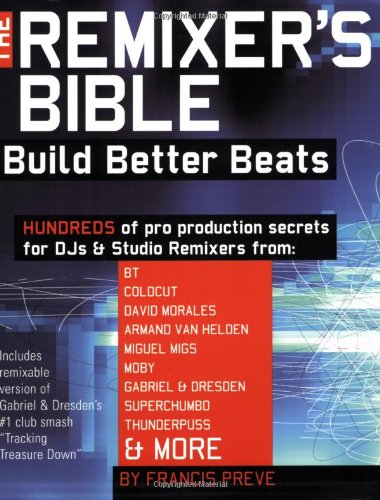
Remixer's Bible: Build Better Beats
Francis Preve
Paperback - 248 pages (August 2006)
A comprehensive collection of interviews and dance music production tips from Keyboard magazine.
From downtempo and hip-hop to house and trance, this book is full of insider information on techniques
the pros use to create world-class remixes and dance tracks. There's a section on getting started for
beginners that details MIDI and sample clearance. For veterans there's instruction on how to craft
infectious synth hooks and retro grooves, edit vocals, create loops, and compress bass tracks. A handy
section delves into the distinctions of various dance music genres; loop tools, programming grooves,
performing, and mixing are also explored. Plenty of software tips are also on hand, detailing popular
programs like ReBirth, ACID, and Cakewalk.
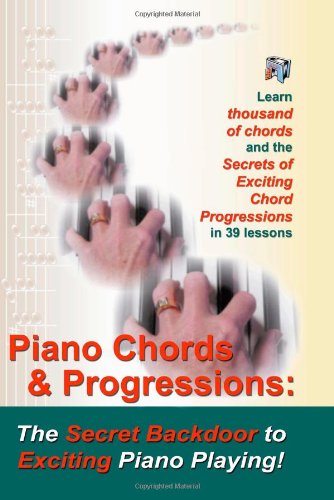
Piano Chords & Progressions: The Secret Backdoor to Exciting Piano Playing!
Duane Shinn
Paperback - 100 pages (July 2006)
Learn piano chords galore — how they are formed and what to do with them. Learn to link
chords together into chord progressions. Illustrations of each chord on a piano keyboard make
it easy to understand and use. Learn to play piano using these piano lessons in a music book!
Learn music chords including major, minor, diminished, augmented, 6th, 7th, 9th, 11th and 13th
chords, plus suspensions and alterations. Read music faster and understand music theory!
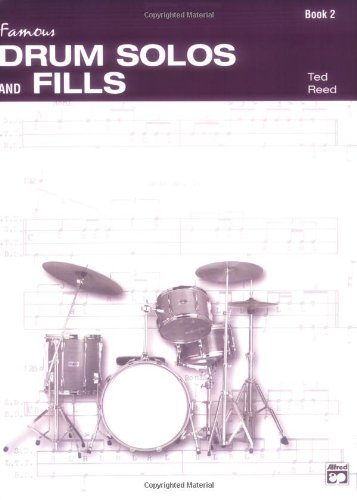
Drum Solos and Fill-Ins for the Progressive Drummer, Book 2
Ted Reed
Paperback - 32 pages (May 2006)
Featuring exercises that can be played in practice and in actual performances,
Drum Solos & Fill-ins for the Progressive Drummer contains 4-, 8-, and 16-bar solos plus fill-ins
from several top drummers. This book is designed specifically to help the beginning drum student develop
individual technique and musical ability. Special emphasis is placed on introducing students to 4-bar solos to
improve drum solo skills. It also includes 13 pages of fill-ins. More challenging than Book 1, Book 2 features
solos and fills inspired by one of the world's greatest drummers & Buddy Rich.
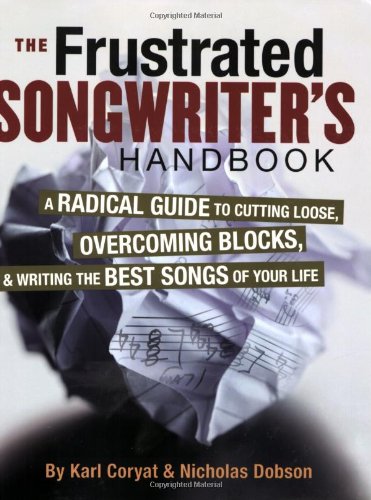
Frustrated Songwriter's Handbook — A Radical Guide to Cutting Loose, Overcoming Blocks, & Writing the Best Songs of Your Life
Karl Coryat, Nicholas Dobson
Paperback - 144 pages (May 2006)
This book teaches an innovative method called Immersion Composition that drives musicians to engage
their creativity by writing as much music as possible in a set time period. After learning to apply
the method, elusive moments of inspiration can be summoned on command. The book also explains how to
form a group of like-minded songwriters (a "lodge"), presents dozens of tips and games for making the
most out of an Immersion Composition session, and shows how to turn brainstormed raw materials into
polished songs.
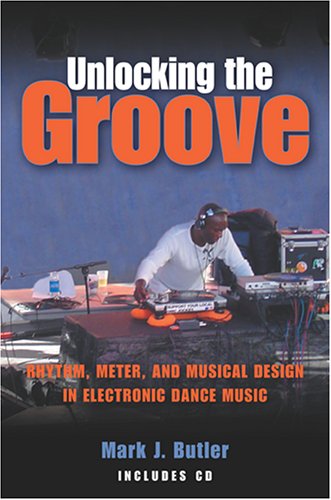
Unlocking the Groove: Rhythm, Meter, and Musical Design in Electronic Dance Music
Mark J. Butler
Paperback - 360 pages & CD (March 2006)
Unlocking the Groove is a groundbreaking, award-winning, music-driven analysis of electronic
dance music (EDM). Author Mark Butler interweaves traditional and non-traditional musical analysis
with consideration of the genre's history and social significance, deconstructing several typical
examples of electronic dance music and focusing on the interaction of beat and rhythmic structure
in creating an overall musical design. Interviews with DJs, listeners, and producers flesh out the
book, providing insight into the perceptions and performance world of EDM, and making a vivid case
for the musical artistry of EDM disc jockeys. The CD included with the book illustrates the analysis
with multiple musical examples, both in excerpts and full songs. Butler's work propels the study of
popular music in exciting new directions, and will impact the range from popular music studies, music
theory, ethnomusicology, and musicology.
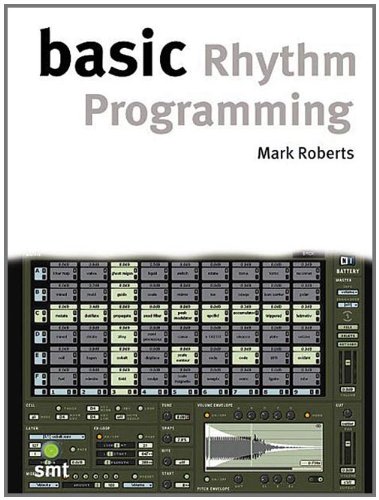
Basic Rhythm Programming
Paul White
Paperback - 42 pages & CD (January 2006)
A guide to creating rolls, fills and paradiddles on the computer. Every aspect of the process is
explained, from connecting the soundcard to producing material rivaling that of Fatboy Slim himself.
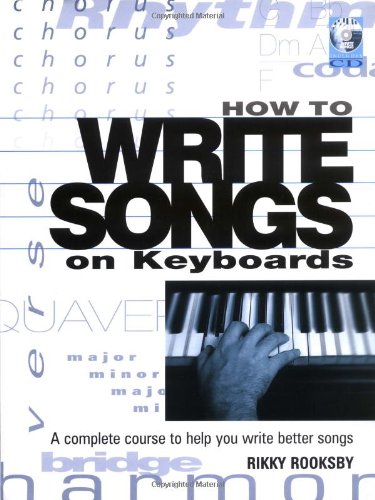
How to Write Songs on Keyboards - A Complete Course to Help You Write Better Songs
Rikky Rooksby
Paperback - 256 pages & CD (October 2005)
How to Write Songs on Keyboards helps both keyboard and guitar players find and develop
interesting keyboard chords and chord sequences that they can use in their own songs. Rather than
trying to teach intricate pieces of music, the book breaks things down into a simple style,
concentrating on basic chords and ideas that can be gradually elaborated to create more complex
structures. A visual system that virtually eliminates the use of standard music notation allows
guitarists who are used to using guitar tablature feel totally at home. Songwriting issues are
also analyzed, including key changes and writing songs in minor keys. The straightforward style
of How to Write Songs on Keyboards will have musicians writing on a keyboard with ease —
even if they never have before.
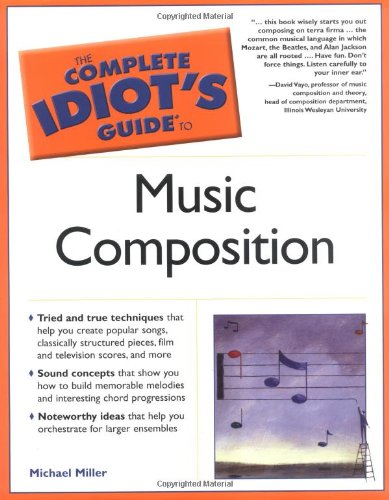
The Complete Idiot's Guide to Music Composition
Michael Miller
Paperback - 288 pages (October 2005)
A step-by-step guide to writing music, this book shows musicians how to compose simple chord
progressions and melodies, and leads them through more advanced compositional techniques and
musical forms. Designed for composers of all types of music, it includes instruction on composing
stand-alone melodies, using different scales and modes, themes and variations, orchestration,
and composing for film, theater, and videogames.
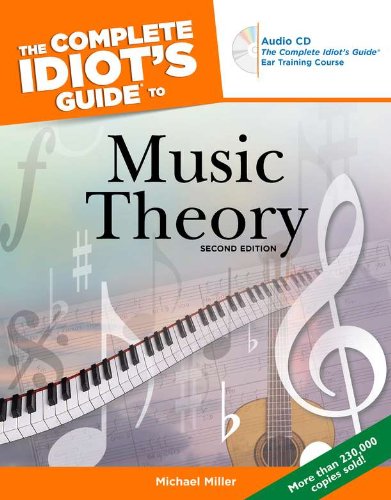
The Complete Idiot's Guide to Music Theory
Michael Miller
Paperback 2nd edition - 336 pages & CD (September 2005)
This updated and expanded edition of The Complete Idiot's Guide to Music Theory breaks
down a difficult subject in a simple way — even for those who think they have no rhythm or consider
themselves tone deaf. With clear, concise language, it explains everything from bass-clef basics
to confusing codas.
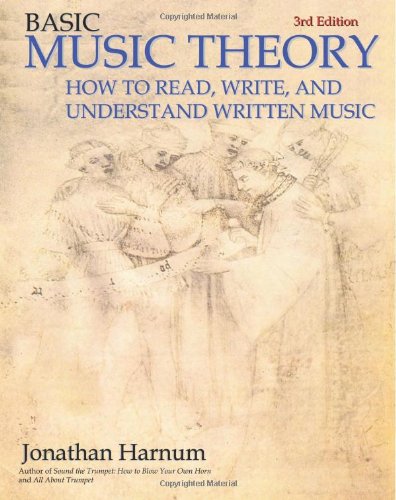
Basic Music Theory: How to Read, Write, and Understand Written Music
Jonathan Harnum
Paperback 2nd edition - 236 pages (January 2005)
What do all those lines and squiggles and dots mean? Basic Music Theory takes you through the
sometimes confusing world of written music with a clear, concise style that is at times funny
and always friendly. The book is written by an experienced teacher using methods refined over
more than ten years in his private teaching studio and in schools. Lessons are short, well-paced
and enjoyable. Whether you're a beginner of any age, whether you're an experienced player who
wants to bone up on your theory, or whether you teach music and need a fun way to do it, you'll
find this book valuable and will refer to it again and again.
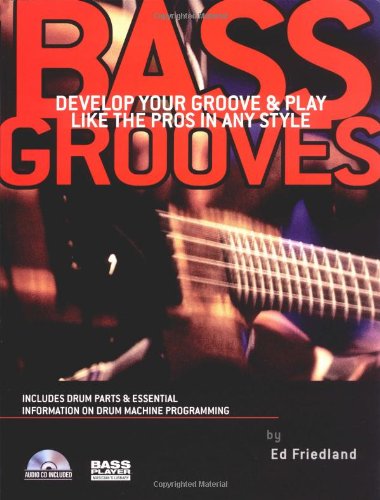
Bass Grooves: Develop Your Groove and Play Like the Pros in Any Style
Ed Friedland
Paperback - 112 pages & CD-ROM (August 2004)
The only book to teach groove development strategies that includes drum notation and tips on
programming drum machines, Bass Grooves and its accompanying CD give bass players both the musical
background and training needed to get on with their grooving. With lessons guided by a metronome
and presented in various musical styles and rhythmic applications, bassists increase their ability
to internalize rhythm. The book also breaks down classic styles and grooves from rock, blues, R&B,
jazz, Afro-Caribbean, and other traditions. Each illuminating example includes a notated version of
the drum part and details how to program it into a drum machine.
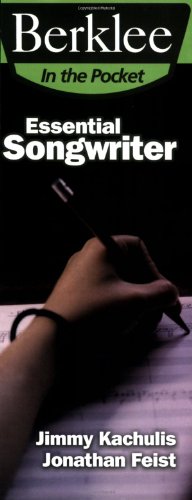
The Essential Songwriter
Jonathan Feist, Jimmy Kachulis
Paperback - 32 pages & CD-ROM (March 2004)
The Berklee in the Pocket Essential Songwriter is an accessible reference guide that will
quickly lead songwriters to ideas that are at the heart of countless hit songs. The tips and
strategies jam-packed into this concise guide will help you tackle writer's block and gain fresh
insight into the songwriting process. Includes: the 17 chord progressions that are at the heart of
the most popular hit songs, guitar charts and keyboard chords showing how to play progressions in
all 12 keys, tips to customize essential chord progressions to suit your own songs, contact info
for businesses and organizations most important to the working songwriter, and more!
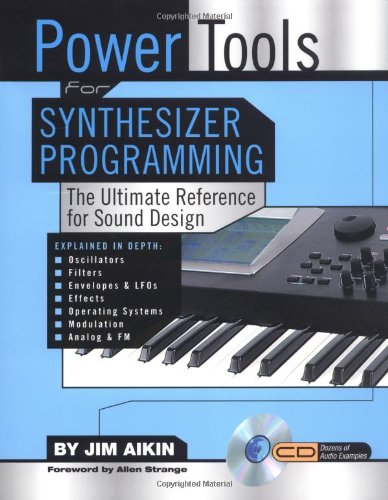
Power Tools for Synthesizer Programming: The Ultimate Reference for Sound Design
Jim Aikin
Paperback - 200 pages & CD-ROM (January 2004)
From hit records to home studios, synthesizers are used in almost every genre of music. This book
fills the know-how gap left by skimpy or garbled owner's manuals. It maps out the components of
contemporary synths in clear, concise detail, and discusses how they can be harnessed to achieve
specific musical effects. Each chapter presents hands-on projects that help musicians hone their
skills. The companion CD-ROM contains audio examples that teach programming techniques.
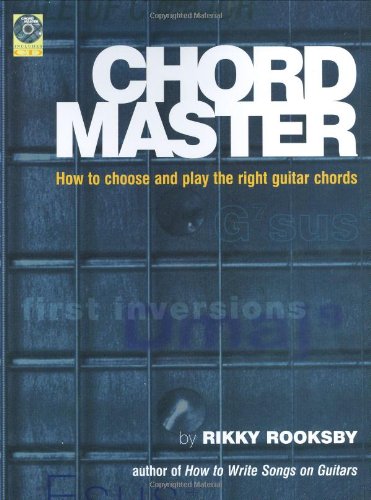
The Chord Master — How to Find and Choose the Right Guitar Chords
Rikky Rooksby
Paperback - 208 pages & CD (January 2004)
Chord Master is the latest book in a series that includes the bestselling How To Write Songs On Guitar,
Riffs and The Songwriting Sourcebook. Unlike traditional chord dictionaries, Chord Master is more
than a catalogue of chord shapes. It takes the time to discuss each of the chord types and patterns a guitarist is
likely to come across, why they sound the way they do, how to use them in songwriting, and how to play them easily.
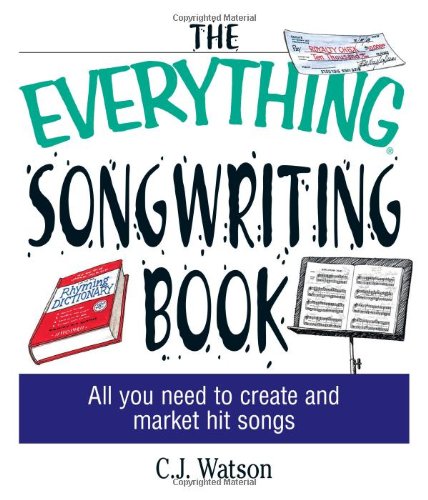
The Everything Songwriting Book: All You Need to Create and Market Hit Songs
C.J. Watson
Paperback - 304 pages (September 2003)
Ever heard a song on the radio and thought you could write a better one? Now's your chance! The
Everything Songwriting Book provides you with all the tools you need to create, perform
and sell hit songs. In easy-to-follow language, pro songwriter and consultant C.J. Watson gives
you tried and tested instruction on choosing a song style, getting your story across, and finding
the right music to match the words. From developing an idea and creating a hook to recording your
songs and getting heard, here's all you need to bring your talent to the next level!
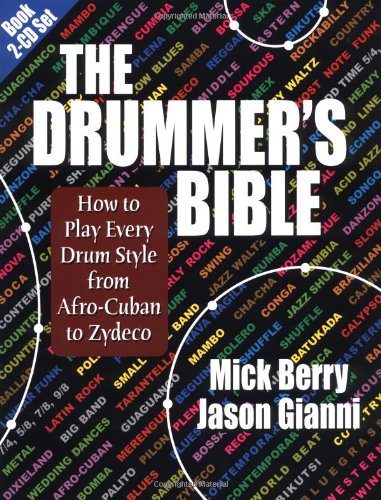
The Drummer's Bible: How to Play Every Drum Style from Afro-Cuban to Zydeco
Mick Berry
Paperback - 181 pages (August 2003)
This guide to popular drum styles offers approximately 400 musical examples in standard drum notation
showing grooves and practical variations, and provides overviews of the history and development of almost
all popular music styles. Among the many styles and subsidiary styles covered are blues, rock, jazz,
Afro-Cuban, Brazilian, klezmer, zydeco, funk, bossa nova, polka, Dixieland, surf, and disco. While this
resource and two-CD set can serve as a simple encyclopaedia for those who need to know how to play a
particular style, suggestions on varying the beat patterns for those who want to explore further and create
their own patterns are also included. In addition, the two CDs contain performances of the musical examples
in the book, which is designed with a lay-flat binding for easy use.
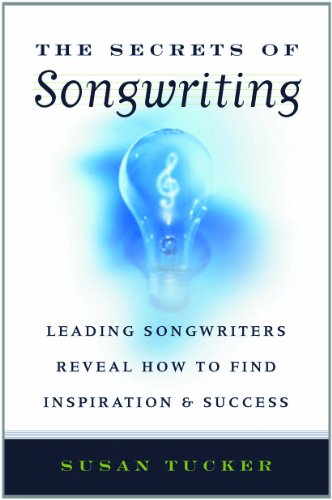
The Secrets of Songwriting: Leading Songwriters Reveal How to Find Inspiration and Success
Susan Tucker
Paperback - 240 pages (July 2003)
Fifteen of the nation's most talented tune-smiths give personal accounts of how they create their works, what
their songs mean to them, and how they keep their creativity flowing. Topics covered during the 54-question
interviews range from personal sources of inspiration, notions of creativity, and the various stages of the
writing process to the pros and cons of co-writing, the taming of the inner critic, and the challenges of a
song writing career. Readers will find advice on how to nurture their creative thinking, develop a healthy
balance between creative work and personal life, and find their unique voice in the songwriting world.
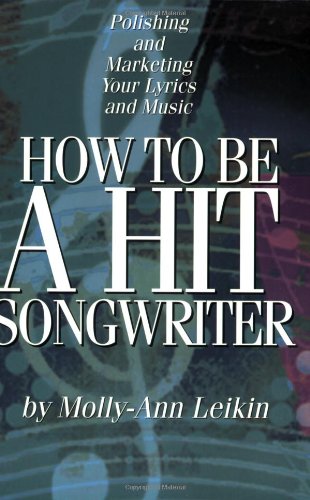
How to Be a Hit Songwriter: Polishing and Marketing Your Lyrics and Music
Molly-Ann Leikin
Paperback - 192 pages (June 2003)
You've written what you think is a great melody, what you hope is a strong lyric, and you've cut what sounds
to you like a killer track. But how do you know if it's a hit? And what do you do with it if it is? Your only
option is How to Be a Hit Songwriter, essential reading for advanced songwriters.Molly-Ann Leikin is the
award-winning songwriter/songwriting consultant who helps good songwriters all over the world become hit songwriters.
Whether your work just needs a little rewriting, polishing or some strong connections, Leikin will guide you step
by step to the top of the charts. In How to Be a Hit Songwriter she offers expert advice and exercises, including
"Seven Easy Steps to Writing Hit Lyrics". The book features inside information that can turn your song into a
potential hit. What's more, she's interviewed music industry power players who share tips that are essential to
all developing artists.
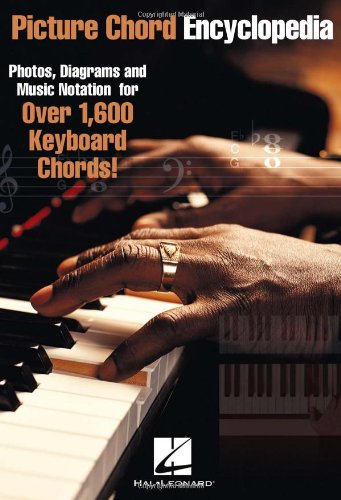
Picture Chord Encyclopedia: Photos, Diagrams and Music Notation for Over 1,600 Keyboard Chords
Hal Leonard Corp.
Paperback - 368 pages (April 2003)
Weighing in at nearly 400 pages, the Picture Chord Encyclopedia is the most comprehensive keyboard
resource ever! It includes easy-to-see photos, easy-to-read chord diagrams and treble and bass clef
notation for over 1,600 keyboard chords, plus basic chord theory, a chord symbol chart, and more! Also
available in a 9 inch. x 12 inch.
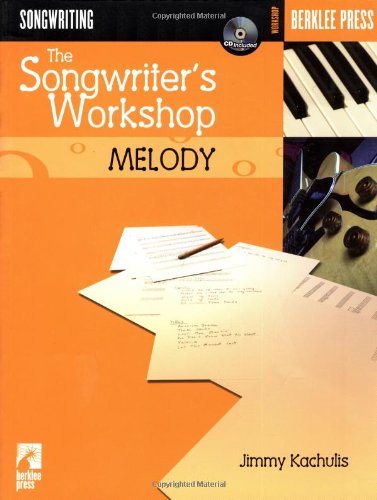
The Songwriter's Workshop: Melody
Jimmy Kachulis
Paperback - 154 pages (January 2003)
Spark your imagination with hundreds of creative songwriting techniques! This hands-on guide provides lessons
on how to write innovative songs, based on popular songwriting courses at Berklee College of Music. Whether you're
a beginning songwriter who can't read a note of music, or an experienced professional looking for new ideas, this
book will provide new insight into your craft; it teaches the fundamental techniques behind today's hit songs,
together with easy-to-follow exercises so you can immediately apply these tools to your own art. This book comes
with a CD so you can practice your songs with accompaniment, even if you can't play an instrument.
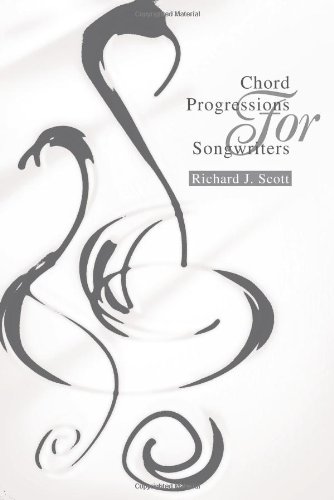
Chord Progressions For Songwriters
Richard Scott
Paperback - 510 pages (January 2003)
Each chapter of Chord Progressions For Songwriters provides a comprehensive self-contained lesson on
one of twenty-one popular chord progressions that every songwriter should know inside and out. Lessons
cover ascending, basic (I-IV), blues, circle (VI-II-V-I), classic rock (I-bVII-IV), combination, descending,
doo-wop (I-VIm-IV-V), ending, flamenco (Im-bVII-bVI-V), folk (I-V), introduction, jazz (IIm-V-I), minor blues,
one-chord, pedal point, rock and roll (I-IV-V), standard (I-VIm-IIm-V), and turnaround progressions as well
as rhythm and Coltrane changes. You will learn how key, duration, substitution, variation (adding or subtracting
chords), and displacement (rearranged chord orders) are used to vary the sound of each progression. You will
also take a look at the authors songwriters notebook and work through exercises to reinforce key chapter
concepts and get you started building your own progressions.
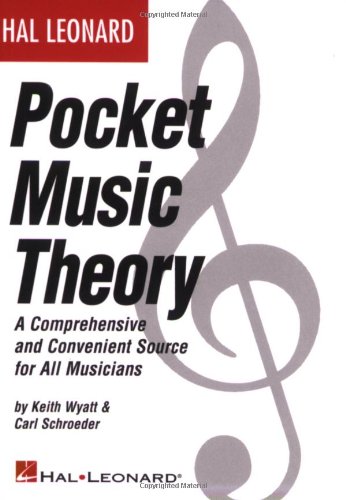
Hal Leonard Pocket Music Theory
Carl Schroeder
Paperback - 176 pages (September 2002)
Following in the footsteps of the popular Hal Leonard Pocket Music Dictionary, this handy pocket-sized
book is the most contemporary music theory book on the market! A step-by-step guide to harmony and theory for
every musician, it includes thorough, yet to easy-to-understand analysis of: intervals, rhythms, scales, chords,
key signatures, transposition, chord inversion, key centers, harmonizing the major and minor scales, extended
chords, modulation and much more. Packed with info from the Harmony & Theory course at Musicians Institute!
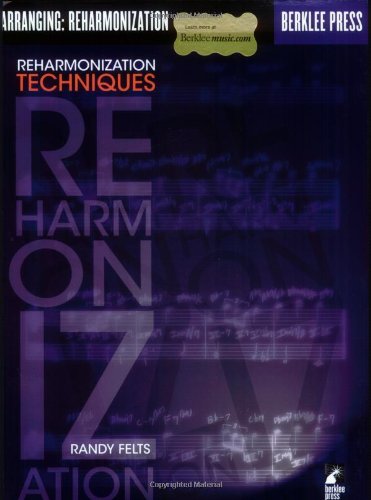
Reharmonization Techniques
Randy Felts
Paperback - 189 pages (September 2002)
When you reharmonize a tune, you give the melody new color by changing its underlying harmonies.
Whether you direct a band or choir, play piano or guitar, or write film scores, you will find simple
and innovative techniques to update songs and develop exciting new arrangements by studying the hundreds
of copyrighted examples throughout this book. Reharmonization techniques covered include: simple substitution,
diatonic approach, adding dominant and subdominant chords, harmonic displacement, modal interchange, and others.
Includes examples and exercises on such tunes as: Black Orpheus, Blue in Green,
The Girl from Ipanema, Isn't It Romantic?, Misty, Over the Rainbow,
Stella by Starlight and more.
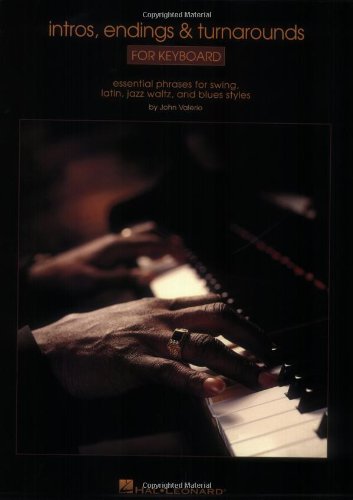
Intros, Endings & Turnarounds for Keyboard: Essential Phrases for Swing, Latin, Jazz Waltz, and Blues Styles
John Valerio
Paperback - 96 pages (November 2001)
Learn the intros, endings and turnarounds that all of the pros know and use! This new keyboard
instruction book by John Valerio covers swing styles, ballads, Latin tunes, jazz waltzes, blues,
major and minor keys, vamps and pedal tones, and more.
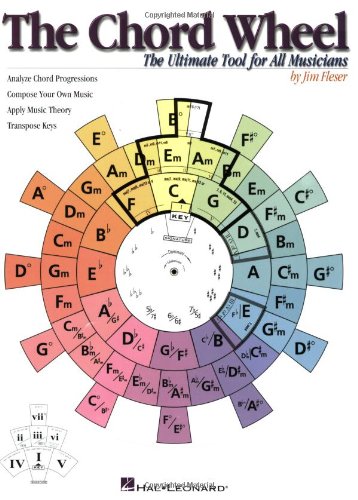
The Chord Wheel: The Ultimate Tool for All Musicians
Jim Fleser
Paperback - 12 pages (December 2000)
Master chord theory ... in minutes! The Chord Wheel is a revolutionary device that puts
the most essential and practical applications of chord theory into your hands. This tool will
help you: Improvise and Solo — Talk about chops! Comprehend key structure like never before;
Transpose Keys — Instantly transpose any progression into each and every key; Compose Your
Own Music — Watch your songwriting blossom! No music reading is necessary.
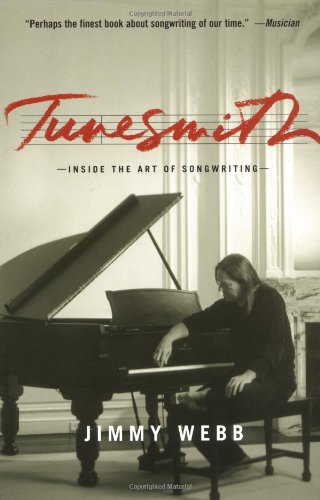
Tunesmith: Inside the Art of Songwriting
Jimmy Webb
Paperback - 448 pages (September 1999)
Webb brings his insiders knowledge, experience, and star power to the ultimate guide for aspiring
songwriters. With a combination of anecdotes, meditation, and advice, he breaks down the creative
process from beginning to endfrom coping with writers block, to song construction, chords, and even
self-promotion. Webb also gives readers a glimpse into the professional music world.
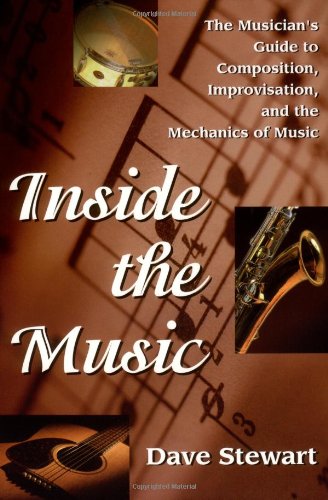
Inside the Music - Guide to Composition
Dave Stewart
Paperback - 128 pages (May 1999)
For those who want to learn the inner workings of music without, as author Dave Stewart notes,
"getting bogged down in a lot of fearsome technicalities," this is an enlightening exploration
of the theory and practice of music. Picking up where The Musician's Guide to Reading & Writing Music
leaves off, Stewart uses the same amusing style, clear examples, and practical advice to encourage
readers not just to read music, but to write some of their own. The book sheds light on tonality,
chord sequences, scales and modes, tempo, rhythm, improvisation and composition, chords and chord
voicings, MIDI, and more.
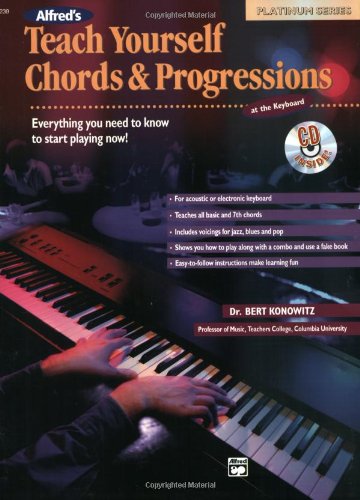
Teach Yourself Chords and Progressions at the Keyboard
Bert Konowitz
Paperback - 80 pages Book & CD (February 1998)
Teach Yourself Chords & Progressions at the Keyboard will have you playing great
chords and progressions right from the beginning. You will learn how to build and organize all
the traditional jazz chords into progressions in every key. As you progress, you will learn how
to comp, create new bass rhythms and improvise from chord symbols using blues and ii-V progressions.
Also included are unique arrangements demonstrating how to play in the style of Meade Lux Lewis,
Erroll Garner and Bill Evans.
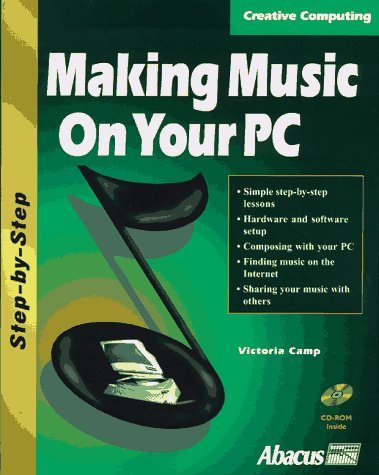
Making Music on Your PC
Victoria Camp
Paperback - 348 pages Book & CD-ROM Edition (July 1997)
PC Music is written for beginners who want to learn how
to make and play music on their PC, with or without a
boost from the Internet. It's for those who want to play
as well as for those who need to know about business
applications for sound, such as embedding music in
presentation documents. The CD-ROM contains a one-minute
sound track for sampling, plus shareware music utilities.
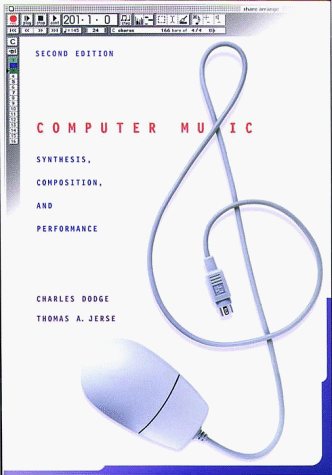
Computer Music: Synthesis, Composition, and Performance
Charles Dodge, Thomas A. Jerse
Paperback 2nd edition - 480 pages (July 1997)
Preserving the organization of the first edition, Computer Music, second edition, is otherwise completely
rewritten to reflect the current state of the relationship between computer technology and music
composition. Emphasizing the basics of computers, digital audio, and psychoacoustics, the new edition serves as a
through introduction to the hardware and software, as well as a readable primer on theories of sound production
and acoustics. The authors offer clear, practical overviews of programming languages, the Macintosh and the
PC platforms, real-time synthesizers, speech-synthesis, digital filtering, artificial intelligence, and much
moreall with the goal of providing students and professionals with an ideal sourcebook and textbook for
electronic composition.
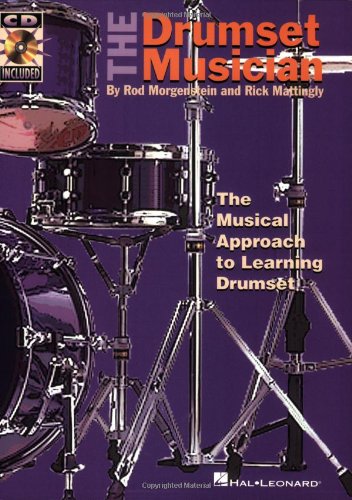
The Drumset Musician
Rick Mattingly, Rod Morgenstein
Paperback - 80 pages & CD (April 1997)
This beginning- to intermediate-level book contains hundreds of practical, usable beats and fills. It teaches how
to apply a variety of patterns and grooves to the actual performance of songs. The CD includes demos and 14 play-along
tracks covering rock, blues and pop styles, with detailed instructions on how to create exciting, solid drum parts.
It's the most realistic & and fun! & way to learn drums.
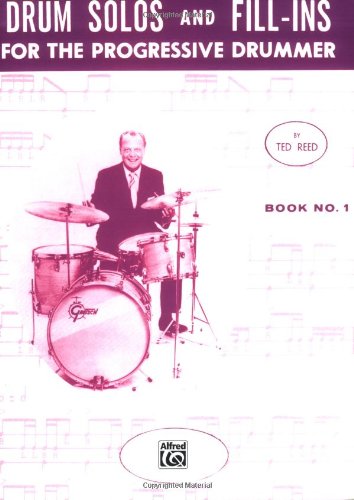
Drum Solos and Fill-Ins for the Progressive Drummer, Book 1
Ted Reed
Paperback - 32 pages (July 1996)
Featuring exercises that can be played in practice and in actual performances,
Drum Solos & Fill-ins for the Progressive Drummer contains 4-, 8-, and 16-bar solos plus fill-ins
from several top drummers. This book is designed specifically to help the beginning drum student develop
individual technique and musical ability. Special emphasis is placed on introducing students to 4-bar solos to
improve drum solo skills. It also includes 13 pages of fill-ins. More challenging than Book 1, Book 2 features
solos and fills inspired by one of the world's greatest drummers & Buddy Rich.
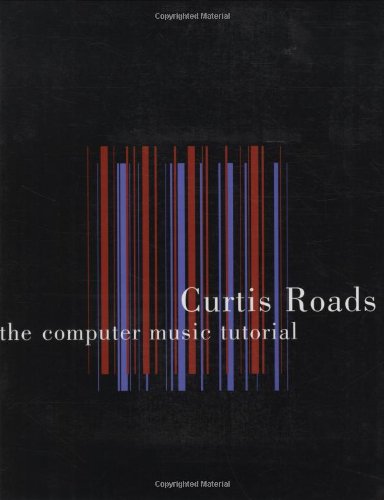
The Computer Music Tutorial
Curtis Roads
Paperback - 1234 pages (February 1996)
A comprehensive text and reference that covers all aspects of computer music, including digital audio,
synthesis techniques, signal processing, musical input devices, performance software, editing systems,
algorithmic composition, MIDI, synthesizer architecture, system interconnection, and psychoacoustics.
A special effort has been made to impart an appreciation for the rich history behind current activities
in the field. Profusely illustrated and exhaustively referenced and cross-referenced,
The Computer Music Tutorial provides a step-by-step introduction to the entire field of computer
music techniques. Written for nontechnical as well as technical readers, it uses hundreds of charts,
diagrams, screen images, and photographs as well as clear explanations to present basic concepts and
terms. Mathematical notation and program code examples are used only when absolutely necessary.
Explanations are not tied to any specific software or hardware.

How to Read Music: Fundamentals of Music Notation Made Easy
Roger Evans
Paperback - 112 pages (April 1995)
A basic primer for anyone without musical training who wishes to learn to read musical
scores when singing or taking up an instrument. The book explains how notes are named
and written; how to read melody, interpret time signatures, keys, sharps, flats, and
naturals; how to read tempo; and how to play chords.
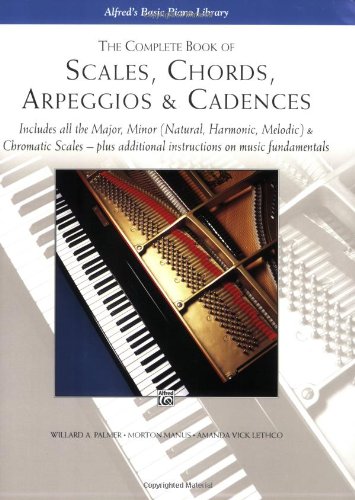
The Complete Book of Scales, Chords, Arpeggios and Cadences
Willard A. Palmer, Morton Manus, Amanda Vick Lethco
Paperback - 89 pages (August 1994)
Scale, chord, arpeggio and cadence studies in all major and minor
keys presented in a convenient two-page format. Includes an in-depth
12 page explanation that leads to complete understanding of the
fundamentals of major and minor scales, chords, arpeggios and cadences
plus a clear explanation of scale degrees and a two-page guide to
fingering the scales and arpeggios. In addition, several "enrichment
options" are provided with exercises such as harmonizing scales,
accelerating scales expanding scales and much more!
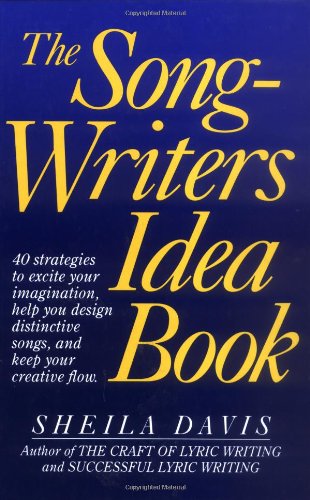
The Songwriters Idea Book: 40 Strategies to Excite Your Imagination, Help You Design Distinctive Songs, and Keep Your Creative Flow
Sheila Davis
Paperback - 250 pages (January 1992)
In her first two books, Sheila Davis classified the major song forms and enduring principles that
have been honored for decades by America's foremost songwriters. Those books have become required
reading in music courses from NYU to UCLA.
In The Songwriters Idea Book, Davis goes one step further, giving you 40 strategies for designing
distinctive songs. You'll break new ground in your own songwriting by learning about the inherent
relationship between language style, personality type and the brain.
• You'll go, step by step, through the creative process as you activate, incubate, separate and discriminate.
• You'll learn to use the whole-brain techniques of imaging, brainstorming and clustering.
• You'll expand your skilled use of figurative language with paragrams, metonyms, synecdoche and antonomasia.
• You'll be challenged to design metaphors, form symbols, make puns and coin words.
• And, you'll learn how to prevent writer's block, increase your productivity and maintain your creative flow.
Over 100 successful student lyrics from pop, country, cabaret, and theater serve as role-models to illustrate
the "whole-brain" songwriting process.
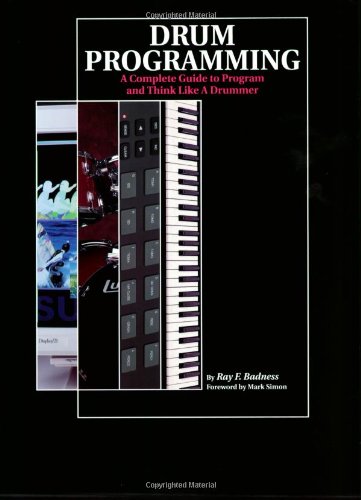
Drum Programming: A Complete Guide to Program and Think Like a Drummer
Ray F. Badness
Paperback - 64 pages (November 1991)
This is your complete guide to programming and thinking like a drummer & not a drum machine user.
Instead of merely providing instructions for you to program into your machine, this book is a direct,
mathematical approach to learning how to drum and how to best emulate a drum kit on a pre-recorded
track. By following this book, you will gain an understanding of the drum kit that takes many drummers
years to learn & and that will lead to more realistic programming and better results!
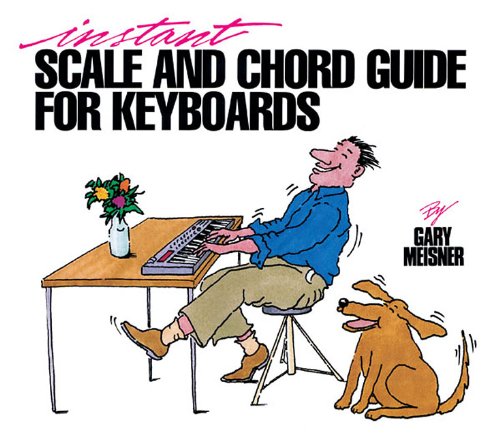
Instant Scale and Chord Guide for Keyboards
Hal Leonard Corp.
Paperback - 64 pages (January 1990)
Key signatures and chord symbols are doors to facility at the keyboard — doors too often
locked by insufficient understanding. This guide unlocks them with clear, simple explanations.
Features: major and minor scales • guidelines for scale fingering • chord charts which
include major, minor, augmented, seventh, ninth, eleventh, major seventh, major nonth, minor
seventh, sixth, minor sixth and diminished chords in all positions • formulas and symbols
for altered chords — a simplified forming complex chords • A glossary of music terms.
The easy-to-read text, concise definitions, and illustrations provide an invaluable reference
guide for your musical pursuits.
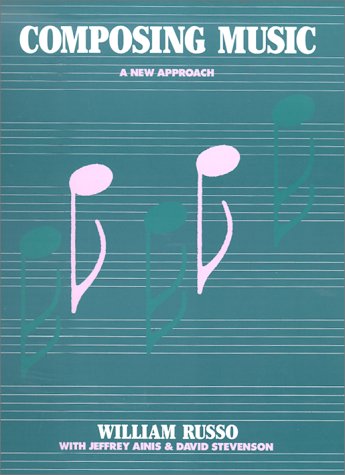
Composing Music: A New Approach
William Russo, Jeffrey Ainis, David Stevenson
Plastic comb - 240 pages (February 1988)
Aimed at those who have some knowledge of music but not formal training in composition, this concise
introduction to composing starts right in with a brief composition exercise, then proceeds step by
step through a series of increasingly complex and challenging problems, gradually expanding the
student's musical grammar.
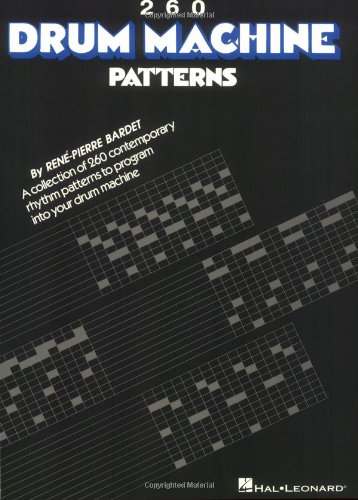
260 Drum Machine Patterns
Hal Leonard Corp.
Paperback - 96 pages (November 1987)
This book is a supplement to the first volume of Drum Machine Patterns. In it you will find over
260 rhythm patterns and breaks. These are original patterns that can be programmed easily on any
drum machine. This book contains the rhythms most often used in contemporary music, and many patterns
incorporate flams, to be used on the latest generation of drum machines.
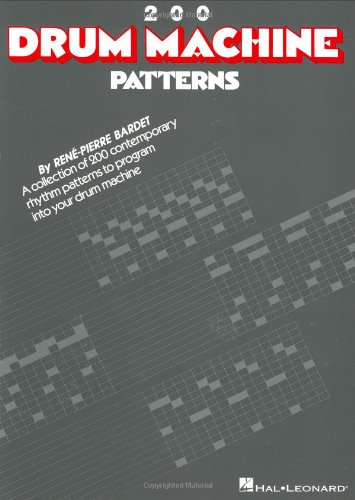
200 Drum Machine Patterns
Rene-Pierre Bardet
Paperback - 80 pages (November 1986)
A collection of 200 contemporary rhythm patterns to program into your drum machine. Ideal for anyone
interested in MIDI or electronically controlled music. This book is designed to be used by the novice
or advanced musician on any brand of drum machine.
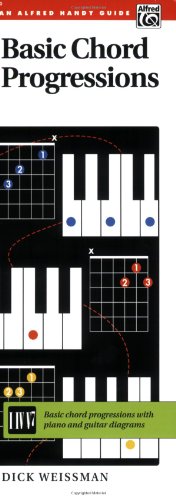
Basic Chord Progressions (Alfred Handy Guide)
Dick Weissman
Paperback - 48 pages (June 1985)
All of today's most popular chord progressions are included in this handy-sized 4.5" x 11" book.
All progressions are shown with piano and guitar diagrams as well as standard music notation.
Covers chord substitutions, the blues, half-step motion, chord inversions, the circle of fifths
and more.
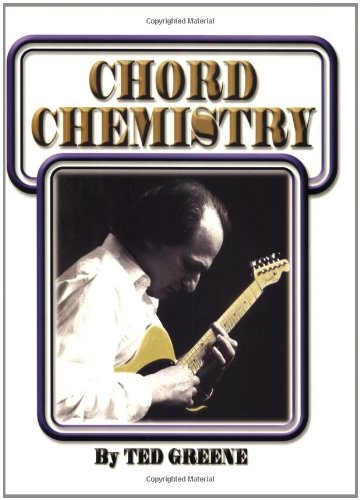
Chord Chemistry
Ted Greene
Paperback - 114 pages (June 1981)
Ted Greene's Chord Chemistry was originally published in 1971 and has become the classic
chord reference book for two generations of guitarists. Whether you are just beginning to search
beyond basic barre chords or are already an advanced player looking for new sounds and ideas this
is the book that will get you there. Designed to inspire creativity this book is a musical treasure
chest filled with exciting new ideas and sounds.
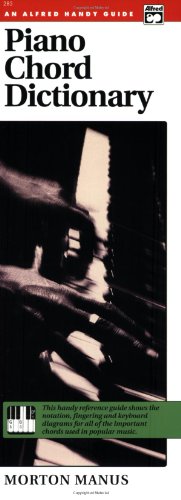
Piano Chord Dictionary (Handy Guide)
Morton Manus
Paperback - 48 pages (June 1978)
This Handy Guide shows the notation, fingering and keyboard diagrams for all the important
chords used in modern popular music. Only the most practical position of each chord is shown.
Two bass notes are given for each chord. Major, minor, diminished, augmented, sixth chords,
seventh chords, ninth chords, eleventh chords and thirteenth chords are clearly shown. Includes
a chord chart and major scale chart.
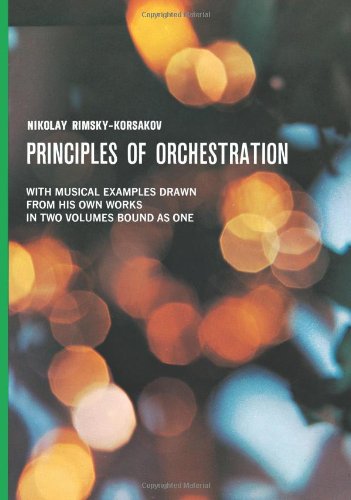
Principles of Orchestration
Nikolay Rimsky-Korsakov
Paperback - 488 pages (June 1964)
In this affordable paperback reprint of an influential work of music theory, Rimsky-Korsakov,
the great classical orchestrator, provides fundamentals of tonal resonance, progression of parts,
voice and orchestra, tutti effects, and much more. This major document includes 330 pages of musical
excerpts.

































































